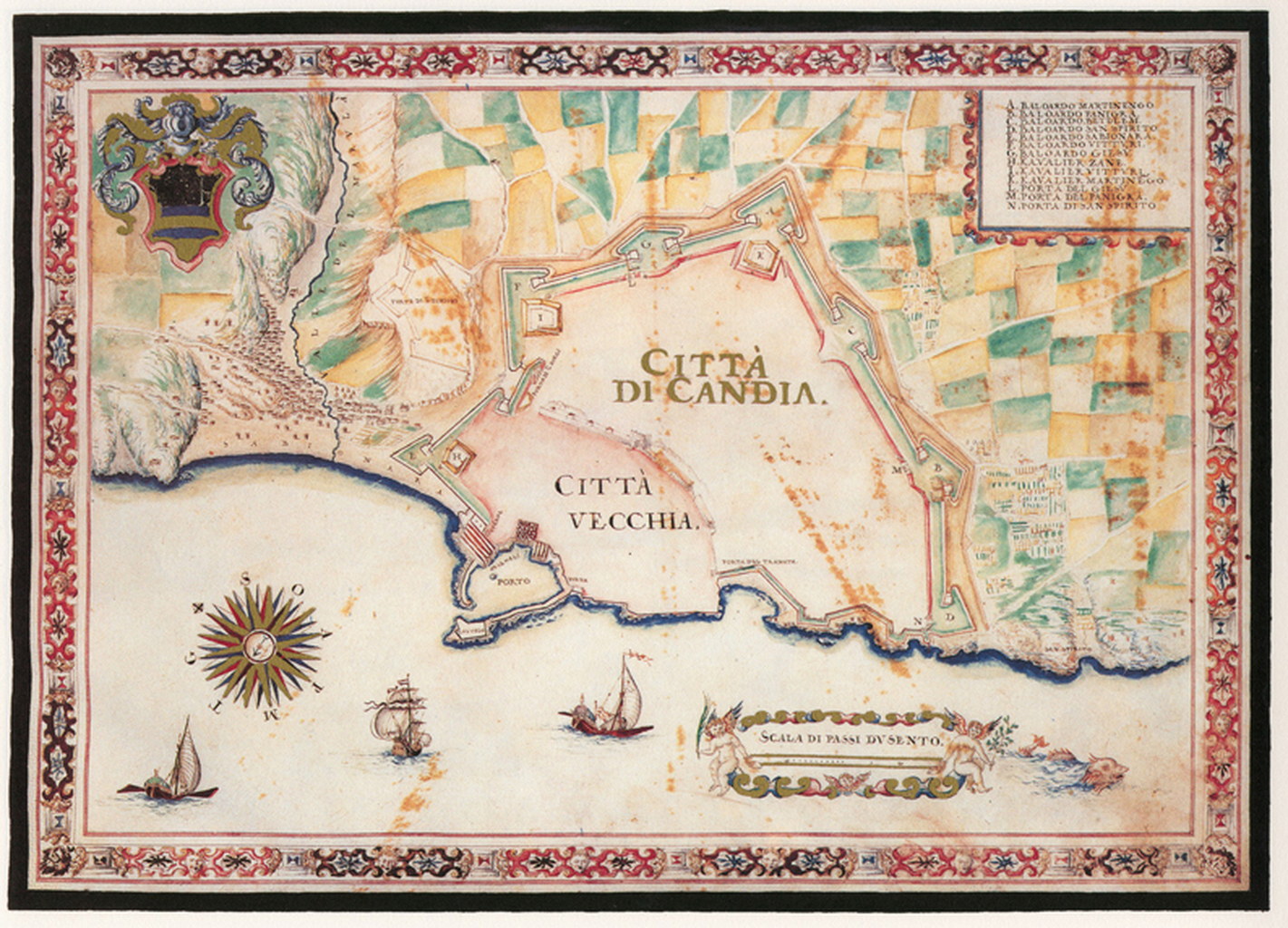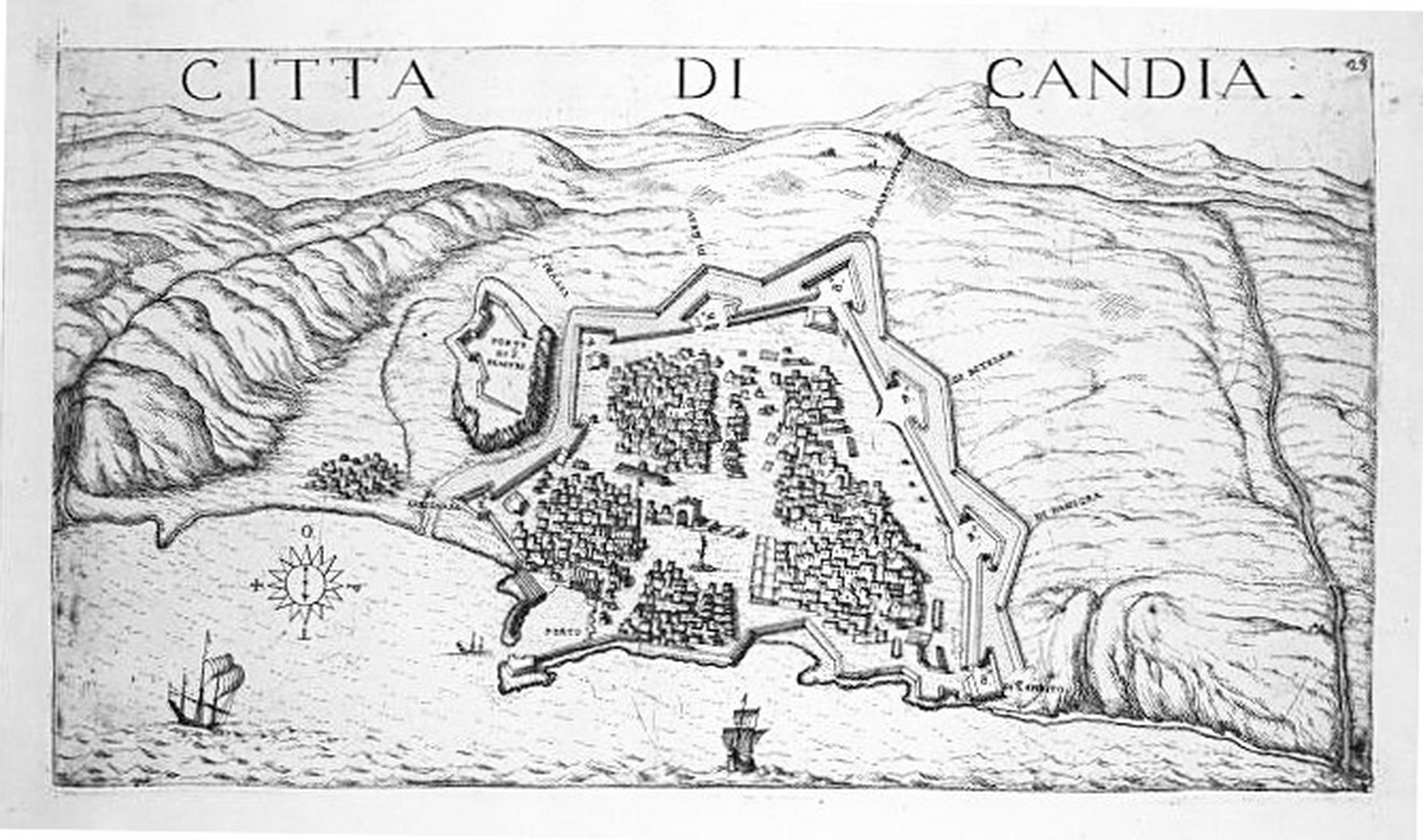Historical Background
The Historical Significance of the Toponym Chandakas – Candia
69 BC – 395 AD: Roman Period
The settlement from the Classical period is described as the “small city of Herakleia” and is mentioned by the Roman naturalist Pliny the Elder, who lived in the 1st century AD. A century later, the geographer Claudius Ptolemy refers to the city as “Herakleion.” It is believed that the city was inhabited during the Classical, Hellenistic, and Roman periods.
395 – 828 AD: First Byzantine Period
The Byzantines fortified the settlement and named it Kastro (Castle), a name often given to fortified towns and strongholds. The small city occupied the top of a hill and most likely covered an area of around 80 to, at most, 100 stremmas (8–10 hectares).
828–961 AD: Arab Period
With the rise of Islam, Crete suffered numerous Arab raids until Andalusian Arabs eventually captured the Byzantine stronghold and made it the administrative center of the island and the base for their pirate operations. For their protection, they built a defensive wall and dug a trench around it, which they called “Khandak”. This Arab fortification was a major construction project, and from then on, the city became known as Rabdh al-Khandak, meaning Fortress of the Trench.” The older names Heraklion and Kastro fell into disuse. Thus, from the Arabic “Khandak,” the Hellenized name Chandax emerged during the later Byzantine period.
961–1204 AD: Second Byzantine Period
In 961, General Nikephoros Phokas liberated Crete and Chandakas. He expanded the city walls and developed new settlements outside the fortifications, leading to Chandakas becoming known as the “Great Castle”. The Byzantines maintained the Theme of Crete until 1204, when the Crusaders partitioned the Byzantine Empire and sold Crete to the Venetians. With the arrival of the Venetians, a new era began for the whole of Crete — and especially for Chandakas.
1204–1669: Venetian Period
The Venetians adapted the name “Chandax” to “Candia” and gave this name to the entire island of Crete. During Ottoman rule, Candia became known as Kandiye. The Venetians fortified Chandakas with new walls, construction of which began in 1462 under the engineer Michele Sanmicheli. Chandakas — modern-day Heraklion — became the most important center of political, social, intellectual, military, and commercial life on the island during Venetian rule. It featured administrative institutions modeled after those of Venice and was protected by Venetian-style fortifications.
1669–1898: Ottoman Period
The capture of Chandakas (Candia) by the Ottomans in 1669, after a 21-year- long siege, was a major blow to Venice, Crete, and Hellenism, as it marked the end of the Cretan Renaissance that had flourished during Venetian rule. On September 30, 1856, a powerful earthquake destroyed much of Chandakas.
1913: Union of Crete with Greece
It is clear from the above that the toponyms Chandakas – Candia are the historical names of what is now the regional unit of Heraklion in Crete, names that defined the area for over a thousand years. As such, the wine-producing bodies of Heraklion have requested the recognition of the historical geographical designation Chandakas – Candia as a Protected Designation of Origin (PDO) for their wines, under the terms set by the relevant Ministerial Decisions.
Bibliography
- Crete, Volume A’ by Stergios G. Spanakis, 1983. Sfakianos Publications, Heraklion, Crete
- The Sea Trilogy of Chandakas by Chrysoula Tzompanaki, Ch. Tzompanaki /Typokreta Publications
- Heraklion – Our Places, Vol. 4, Kathimerini Publications
- Product Specification:
Chandakas–Candia.
Regulation (EC) No. 1234/2007, Article 118c, Annex (2)



